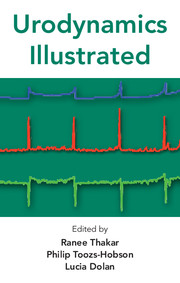Book contents
- Frontmatter
- Contents
- About the authors
- Acknowledgements
- Glossary and abbreviations
- Preface
- 1 Introduction
- 2 Setting up the equipment
- 3 Flow rate testing
- 4 Cystometry
- 5 Videocystourethrography
- 6 Ambulatory urodynamic monitoring
- 7 Urodynamic artefacts
- 8 Assessment of urethral function
- 9 Bladder diaries
- 10 Pad testing
- 11 Pre-test assessment using questionnaires
- 12 Ultrasound as a tool in urodynamics
- Index
9 - Bladder diaries
Published online by Cambridge University Press: 05 February 2014
- Frontmatter
- Contents
- About the authors
- Acknowledgements
- Glossary and abbreviations
- Preface
- 1 Introduction
- 2 Setting up the equipment
- 3 Flow rate testing
- 4 Cystometry
- 5 Videocystourethrography
- 6 Ambulatory urodynamic monitoring
- 7 Urodynamic artefacts
- 8 Assessment of urethral function
- 9 Bladder diaries
- 10 Pad testing
- 11 Pre-test assessment using questionnaires
- 12 Ultrasound as a tool in urodynamics
- Index
Summary
Introduction
The bladder diary is an important tool in the investigation of patients with lower urinary tract symptoms and voiding dysfunction, as there is poor correlation between subjective and charted estimates of diurnal and nocturnal urinary frequency. There are different methods for recording information on voiding patterns. A frequency–volume chart is the simplest method and collects information on volumes voided and micturition times. A voiding or bladder diary provides a more detailed record. It facilitates history taking by acquiring information on incontinence episodes, pad usage and other information such as fluid intake, degree of urgency and degree of incontinence. Bladder diaries should be completed as part of the assessment before treatment and their use is recommended by the National Institute for Health and Clinical Excellence (NICE).
Types of bladder diary
There are two methods for recording information in a bladder diary. The paper diary is the most common as it is easy to produce and store, inexpensive and convenient to post or hand directly to the patient (Figure 9.1). The alternative is an electronic bladder diary (Figure 9.2) such as the UroDiary™ (LifeTech, Stafford, Texas). This type of diary uses an intelligent character recognition programme and calculates a centile ranking for results, correcting for age and 24-hour voided volume. The diaries are scanned into a computer and a customised report is generated.
Keywords
- Type
- Chapter
- Information
- Urodynamics Illustrated , pp. 99 - 116Publisher: Cambridge University PressPrint publication year: 2011



